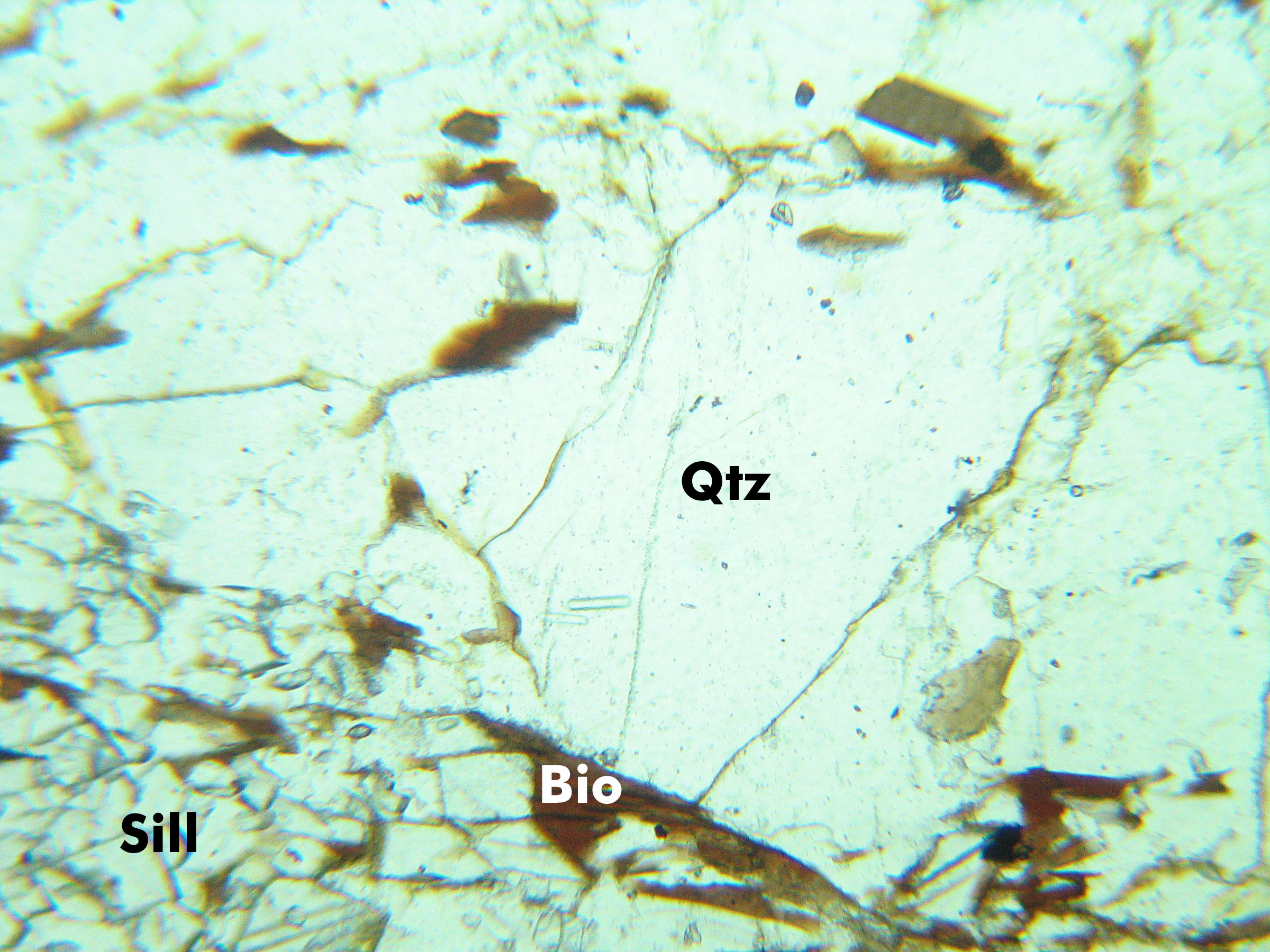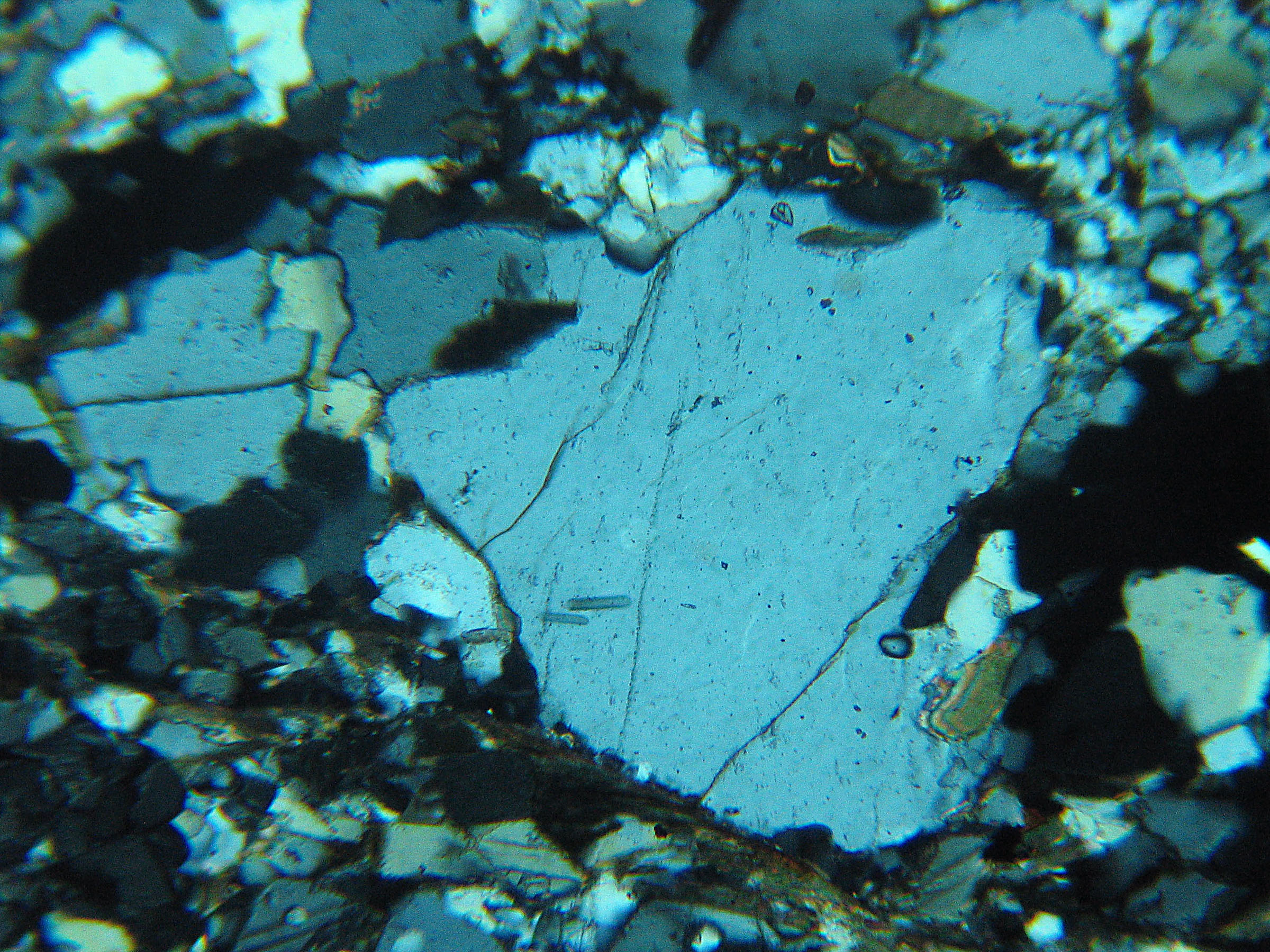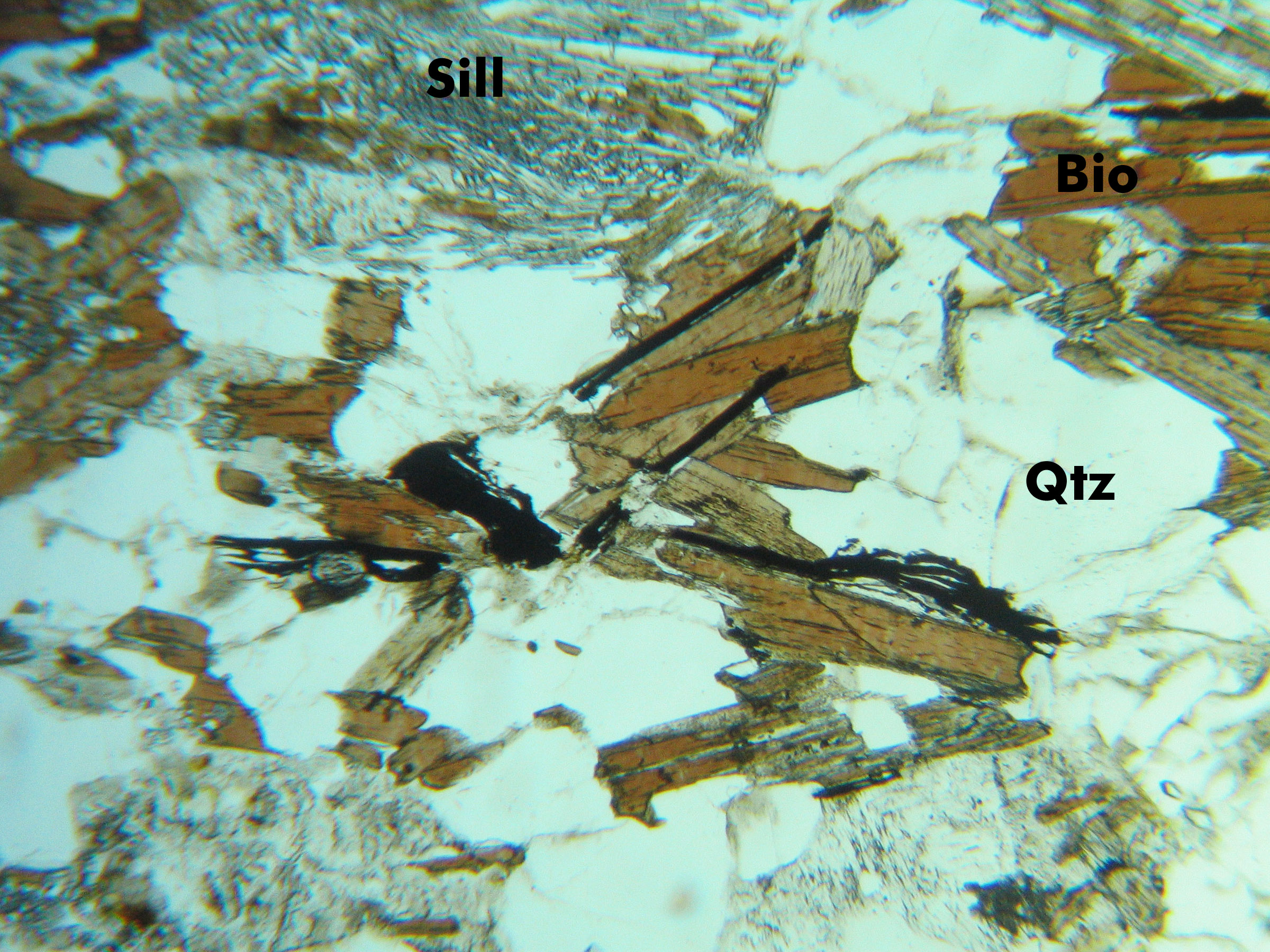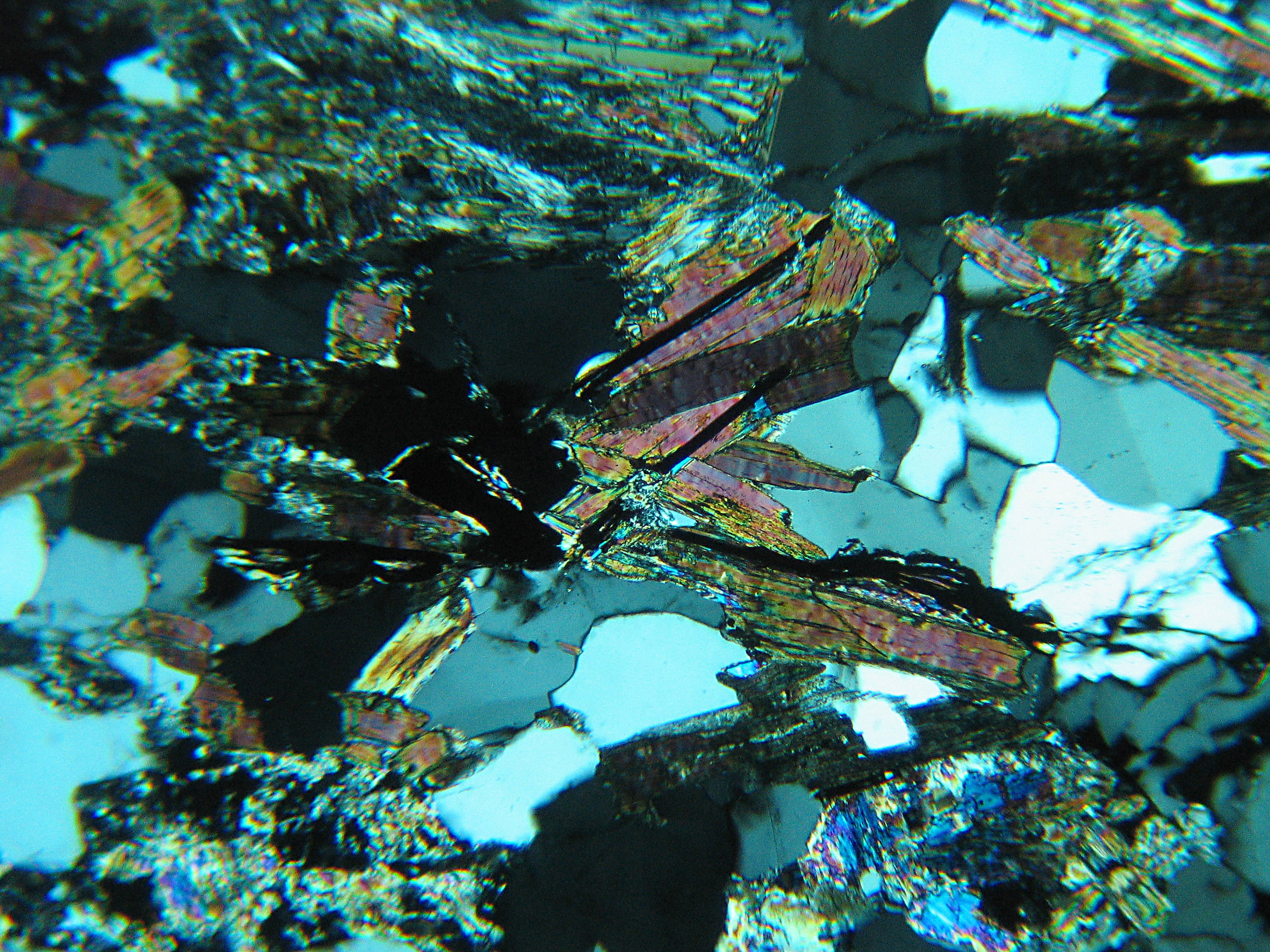Sillimanite, Quartz and Biotite in a Pelitic Gneiss
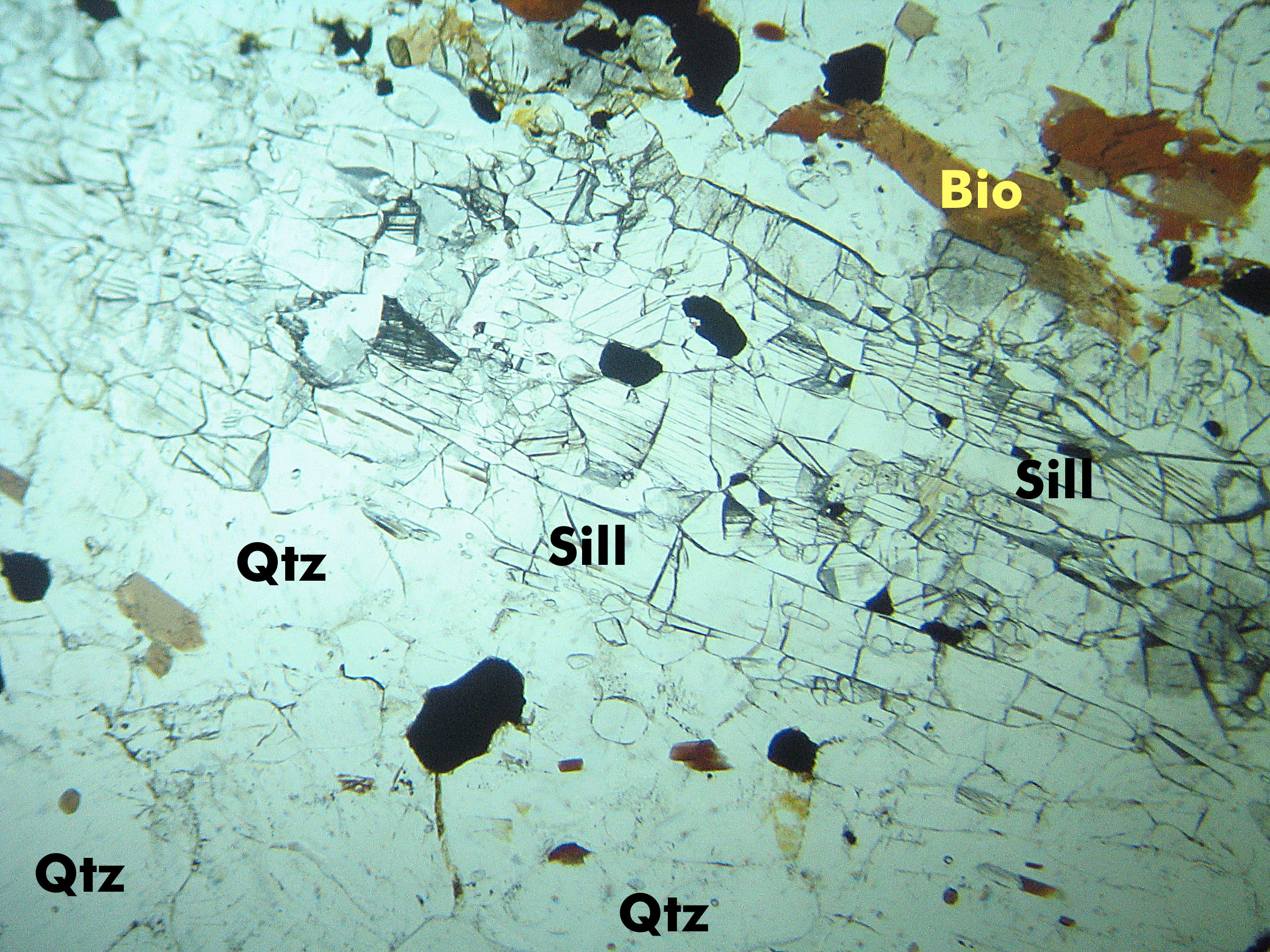
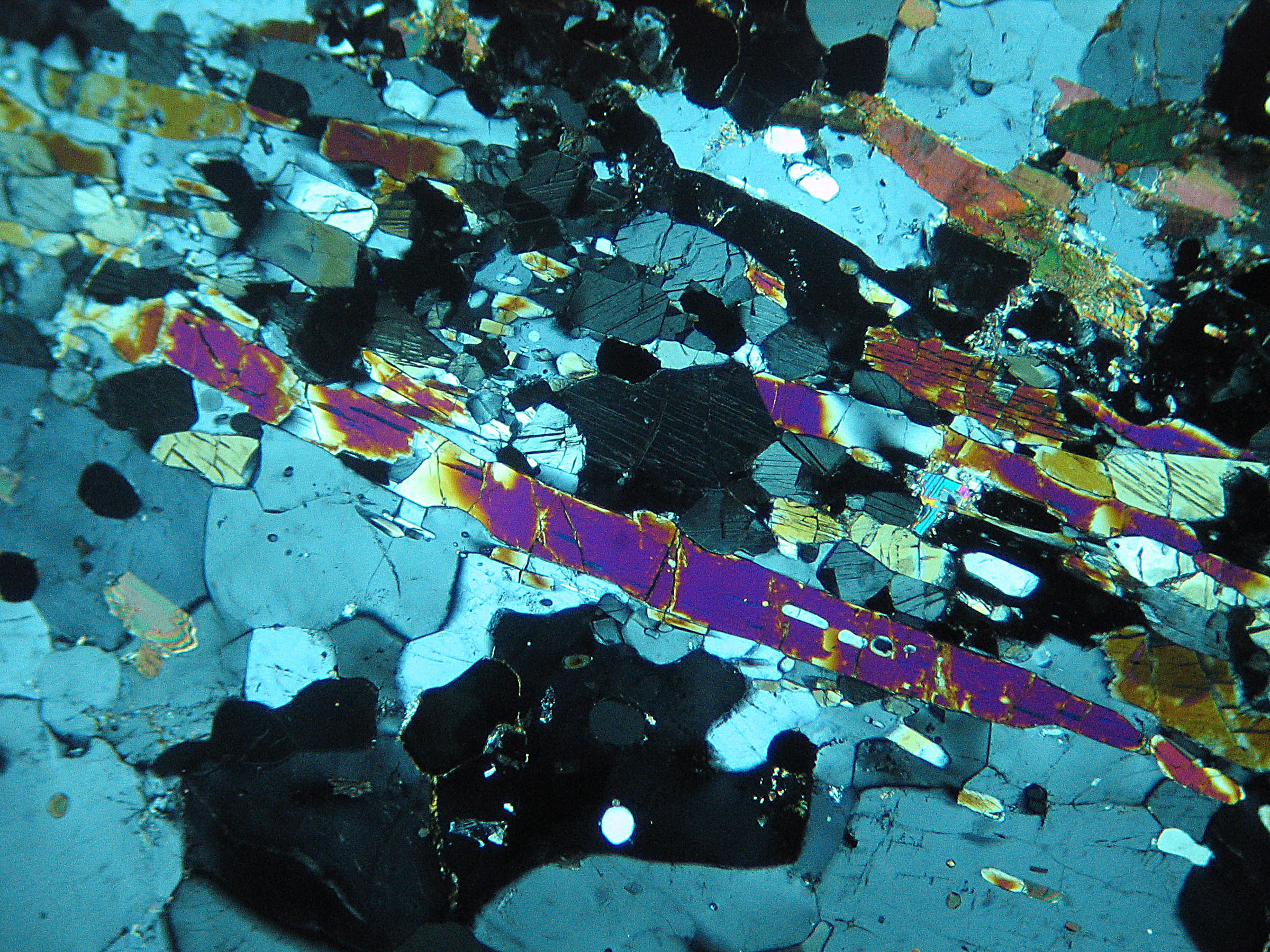
This sample contains needles of sillimanite (high relief and somewhat fractured), quartz, biotite and magnetite. The sillimanite and quartz are colorless, the biotite is brown, and the magnetite is opaque (PP). In the XP view, the quartz shows low order white-gray interference colors, while the biotite and sillimanite higher order interference colors. The largest needle of sillimanite is about 2 mm long and shows upper second order purple-red interference colors. Note the high relief of the sillimanite compared to quartz.
This sample comes from near Kazabazua,
Quebec.


